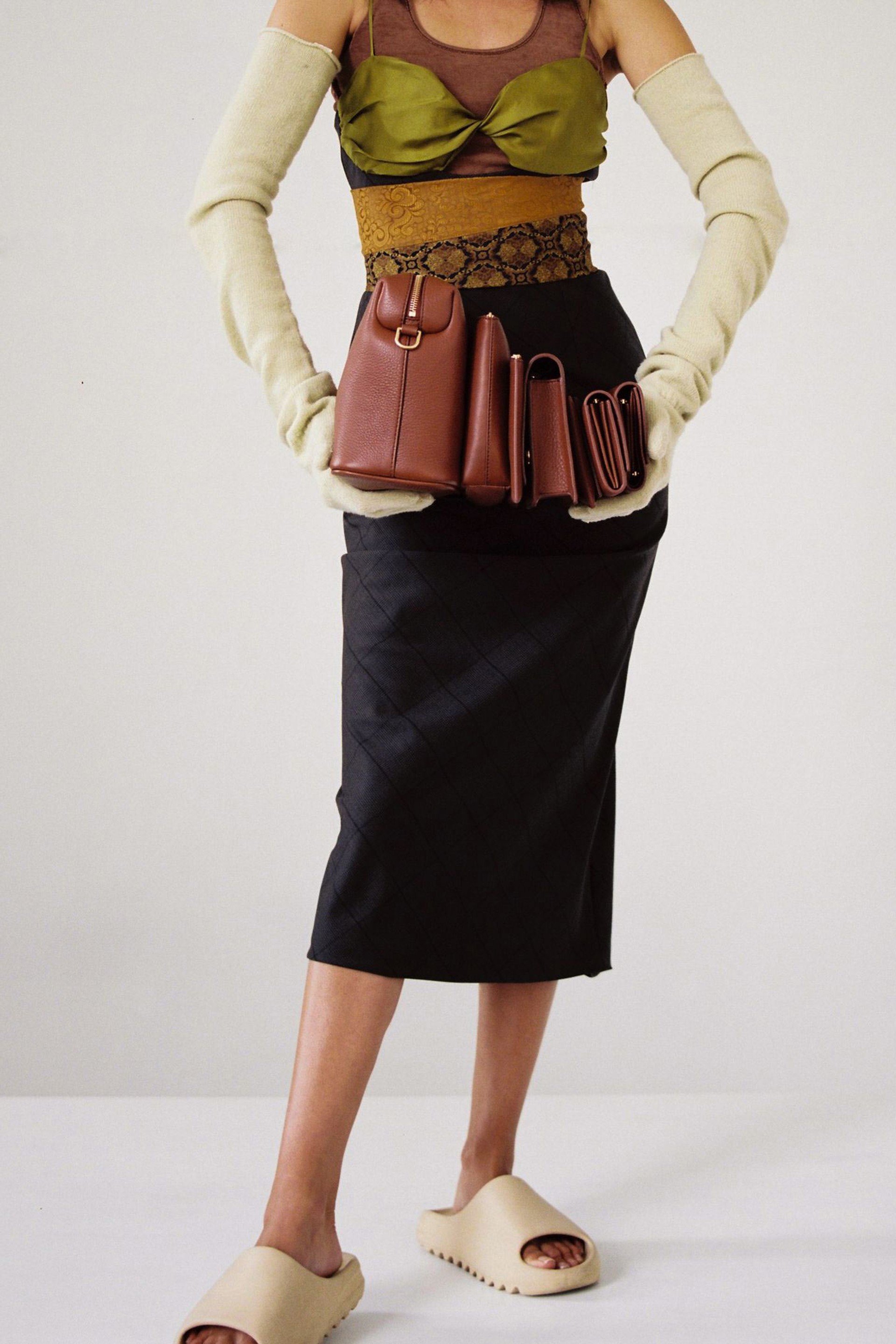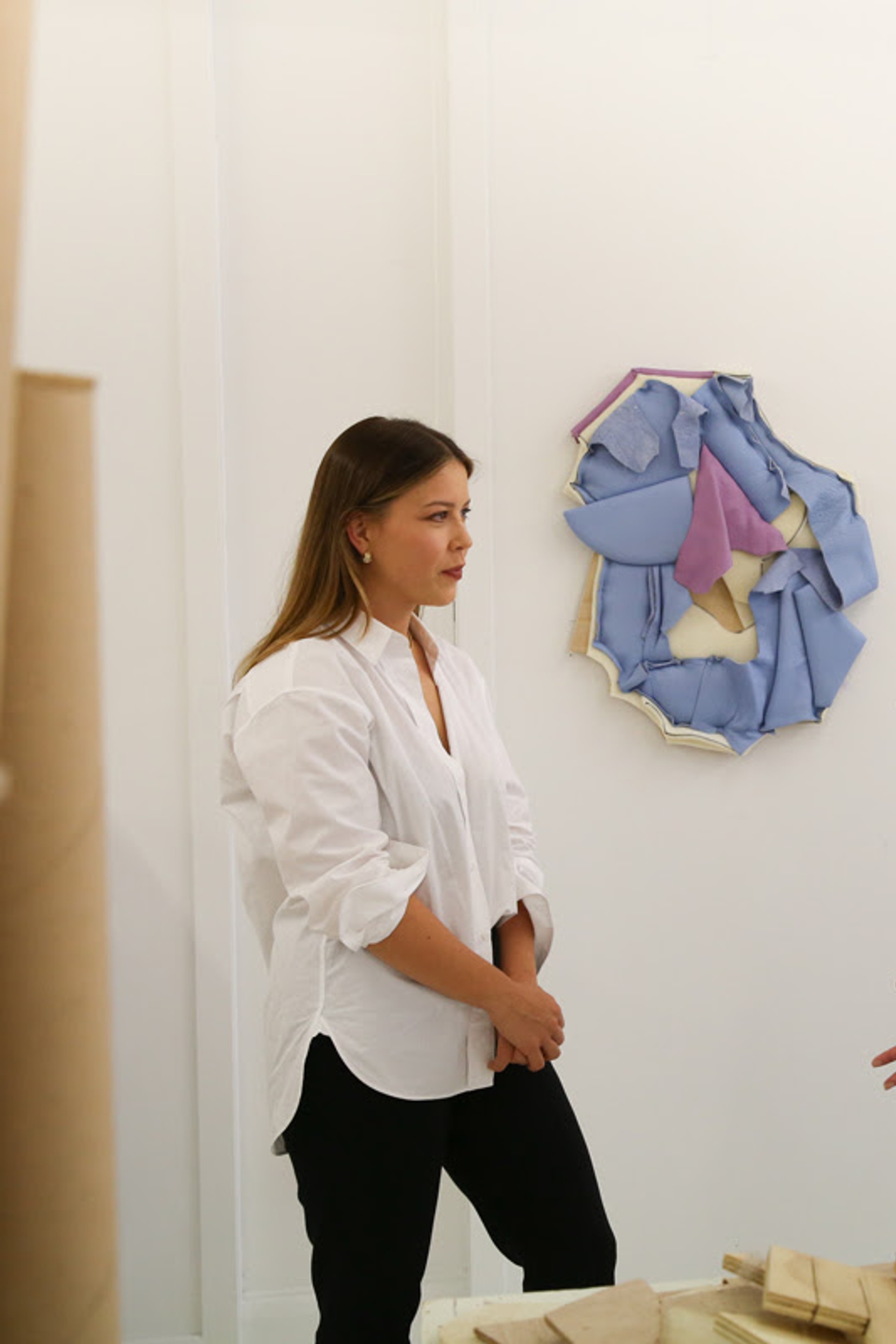The Tanning Process: Barry Parsons
Barry Parsons
The tanning process is a crucial part of creating a Yu Mei bag. Essentially, it’s how the deer skins are transformed into the buttery-soft leather we’re known for, and where they’re dyed in accordance to the specific colourways we design each season. It takes a lot of time, care and expertise to achieve a quality end result, which is why we’re thrilled to have worked with Barry Parsons, previously of Timaru-based tannery Light Leathers, since Yu Mei’s inception.
Barry’s a true master of the art. He’s worked in tanning for decades, collaborating with fashion houses around the world to provide the high quality deer nappa Light Leathers are renowned for. Here, Barry takes us through the steps involved in tanning our signature deer nappa.
Creating Yu Mei’s high quality leather is a complicated process, and there are many steps involved in bringing out the character, and natural softness, that deer leather is famous for.
The journey begins once the deer skin has been delivered from the tannery’s protein processing facility. We source our skins for Yu Mei from some of the most highly regarded deer farmers in New Zealand, and they need to be delivered to the tannery within twelve hours of being processed. Once they arrive, we pass each skin through a machine which removes excess tissue—a step that helps create the final grain effect we see in our leather.
Salt is then applied to the skins to preserve them, until we are ready to remove the hair ( the salting process is sometimes referred to as curing ). This is all done within twelve hours of the skins reaching the tannery—if it isn’t done in a timely manner, we risk damaging the grain of the skin. Ideally we then hold the salted skins for approximately four weeks, as it relaxes and opens them up. We personally check the skins each week, to ensure they’ve all been salted and stacked correctly.
The next step is to lime the skins, which is the process of removing the hair. Liming is done in a large mechanical drum, and takes approximately twelve hours. The skins are then de-limed in the drum, before being ‘bated’—this means that enzymes are applied, which helps further soften and relax the skin.
After all the skins have been de-limed, chemicals are added to the mechanical drum to preserve the skins. This is referred to as pickling, and is done in preparation of tanning and colouring of the leather. Once the process of pickling has taken place, the skins are then tipped into holding drums to allow them to drain. They contain a lot of natural fats at this point, so they’re very slippery! Next, we stack the skins on wooden pallets, taking care to avoid any folds and creases. Then they are re-fleshed mechanically. This action is required to even the thickness of the skin, as well as extract moisture. Each skin is machine-fleshed separately, then re-stacked to further drain.
At this point, we conduct an inspection of the pickled skins, checking their general condition after the pickling process to ensure good hair removal and grain quality. Pickled skins can be held in this condition for up to six months, prior to tanning and dying.
The next process is to tan the skin ( essentially changing the skin’s chemistry to make it more durable ). In short, this process is achieved either by minerals, oils or vegetables, but the most common tanning process is mineral tanning. The reason for this is that the skin retains its shape, the leather has outstanding softness, and it’s able to achieve a high colour palette and has good light fastness—meaning once the skin is dyed, the colour won’t fade as much. From start to finish, this can take up to 24 hours to complete in tanning drums. Skins can later be re-tanned to specific tannery or client specifications.
After the tanning process, the leather is then dried and stacked for inspection, prior to colouring. Deerskin requires specialist graders to select skins in the correct thickness and quality for each client specification. There is a very small proportion of skins that are the right thickness and quality for bag production.
Once skins are selected into the correct grade, they are then held for dyeing to client specific colour choice. The colouring process is carried out by dyeing and finishing technicians, who formulate dyes for client-specific colours. This requires mixing and testing several dyes to achieve the accurate colour. Colours can change under different light conditions, so this is a very complicated process which takes a lot of skill.
The dyes we use are water based, and added into large dye drums with the leather in order to be tumbled, which allows the colour to penetrate into the skin. This is known as drum dyed aniline. A small amount of pigment can also be included to level the colour—this is known as semi-aniline, and is ideally suited for the fashion industry. Fatliquor ( fats & oils ) are also added during this process, to assist with the softness of the leather.
After the skins have been dyed, we dry them out. They are then tumble milled in large wooden drums to enhance the natural grain. Drumming can take from one to twelve hours, depending on the softness and effect of leather required.
Skins are then further shaved mechanically to achieve an even thickness across the entire hide, making them ready for bag production. The leather is then checked and trimmed by our highly qualified specialist graders, who do one last check for any imperfections.
The leather is then finally ( ! ) ready for measurement, and can be sent to Yu Mei for them to work their magic.
Bag 0
Duties and taxes included for Australia and New Zealand
Carbon Neutral Shipping
Shipping
| New Zealand | Complimentary Shipping over $50 NZD, Complimentary Returns, Click & Collect |
| Australia | Complimentary Shipping over $200 AUD |
| Rest of World | Complimentary Worldwide Shipping over $200 USD |
Areas
| New Zealand | Orders shipped within 2-3 working days, sent via tracked Courier Post. |
| Australia | Orders shipped within 2-3 working days, sent via tracked DHL Express |
| Rest of World | Orders shipped within 2-3 working days, sent via tracked DHL Express |
New Zealand and Australia
Taxes and duties are included within the purchase price.
Rest of World
As orders are shipped from our New Zealand warehouse you may incur duties, clearance fees or local taxes. Yu Mei Ltd does not cover these charges and is not liable for any fees incurred; although we will always do our very best to ensure a smooth delivery to you. For more information, we advise you to check with your local customs agent.
Choose Your Shipping Region / Currency
Change Region / Currency
Join
Club Yu Mei
Club Yu Mei is a community of like minded, forward thinking individuals. It’s a place to celebrate those who inspire the Yu Mei brand and beyond. From interviews and ideas to events, debates, dinner parties and more, the Club is an inclusive space by real people, for real people. Unlock our cabinet de curiosités and discover the thought-provoking universe of Club Yu Mei.
Search
Popular Searches
Choose Your Shipping Region / Currency
By continuing to use this site you consent with our cookie policy.
To stay abreast of all things Yu Mei, join our Club newsletter and enjoy 10% off your first purchase.





